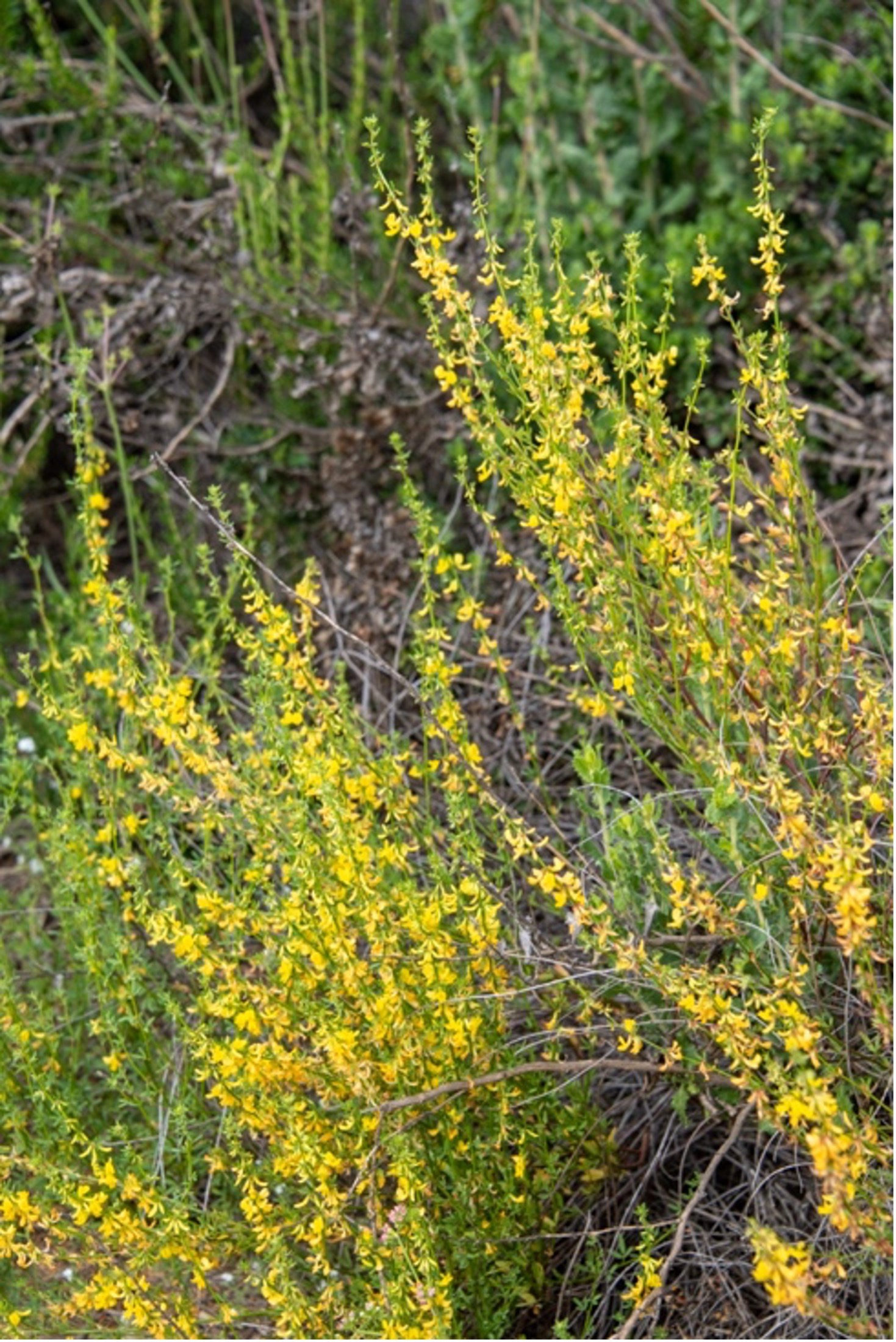
Deer Weed
Much of the year, deerweed looks like a discarded bundle of sticks, but in spring, when the long slim branches are covered with small bright yellow and orange flowers. Like many members of the pea family, the roots of deerweed contain symbiotic nitrogen-fixing bacteria, which transform atmospheric nitrogen into nitrogen compounds that can be used by higher plants.
Deerweed is the most abundant coastal sage scrub plant to support nitrogen fixation, which makes it an important post-fire colonizer. Although deerweed rarely survives a fire, germination of the seeds is stimulated by heat leading to rapid post-fire colonization.
The Chumash used the branches as a broom for rough sweeping. The smoke from deerweed was used to blacken Juncus (a grass) to be woven into baskets to provide design. Deerweed was also used for thatching sweathouses.
The common name, deerweed, appears to come from the fact that the plant is nutritious and readily eaten by deer and other grazers; the shape of the plant, which resembles a broom buried handle down and/or to its early use as a broom.
